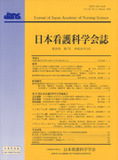Japanese
English
- 販売していません
- Abstract 文献概要
- 参考文献 Reference
- サイト内被引用 Cited by
要旨
目的:冷え症を苦痛に感じている妊婦は多いが,冷え症に関する研究は少ない.本研究は,冷え症の自覚がある妊婦の体温および,妊娠中の随伴症状や日常生活行動の特徴の実態を分析する.
方法:妊娠20週以降の妊婦230名を対象とし,体温測定と質問紙調査を行った.調査時期は2005年6~7月と11月である.
結果および結論:1.冷え症の有無において,前額部温と足底部温の温度較差は有意差が認められた(6~7月:2.0℃ vs 0.6℃,11月:5.2℃ vs 2.4℃).つまり,冷え症の自覚は温度較差を反映していた.2.冷え症の自覚と冷え症を判断する基準(寺澤)の一致率は80.9%と高値であった.つまり,どちらでも,冷え症を判断する指標となり得ることが示唆された.3.前額部温と足底部温の温度較差は,季節による影響が強く,外気温が低くなれば温度較差も大であった.また,自分が冷え症であると感じている妊婦の割合は6~7月では67.7%,11月は66.0%で,季節による影響はなかった.4.構造方程式モデリングより,「深部温温度較差」は「冷えの認識」に影響を与えており,「冷えの認識」は「冷えに関連した妊娠に伴う症状」に弱い影響を与えている.さらに「冷えに関連した妊娠に伴う症状」は「不規則な生活」から直接的な影響と,「陰性の食品の摂取」を介した間接的な影響を受けている.
Abstract
Aim: Pregnant women often complain about cold sensitivity. While clinical measures of poor circulation correlate with their symptoms, few studies have investigated cold sensitivity in pregnant women. This study analyzed the relationships among (1) characteristics of skin temperature of cold-sensitive pregnant women;(2) accompanying symptoms;and (3) daily patterns.
Methods: The subjects were230pregnant women at 20weeks gestation at the beginning of the investigation,which was conducted in June-July2005and November 2005. Instruments were the Terasawa temperature measurement and a questionnaire.
Results and Conclusions: 1. The group with cold-sensitivity had significantly larger temperature differences between forehead and sole of the foot than did the group without cold sensitivity (1.95℃ vs 0.60℃ in June-July, 5.23℃ vs 2.42℃ in November). The perception of cold sensitivity correlated with the temperature differences. 2. For the majority of the subjects, their subjective cold sensitivity and Terasawa Standard's cold sensitivity measurement reached a consistency of80.9%;therefore either method could be used to judge cold-sensitivity.3. For the non-cold sensitive group, the forehead and the sole temperature differences were strongly influenced by the seasons, however, the percentage of pregnant women with subjective sensitivity to cold was 67.7% in June-July, and 66.0% in November, and therefore not influenced by the seasons. 4. Structural equation modeling indicated that,“deep temperature differences”directly affected “recognition of cold sensitivity”and “recognition of cold sensitivity”directly yet weakly affected “sensitivity to cold related symptoms with pregnancy.”Furthermore, “sensitivity to cold-related symptoms with pregnancy”was directly affected by “irregular life patterns”and was indirectly affected by “irregular meals.”
Copyright © 2008, Japan Academy of Nursing Science. All rights reserved.


